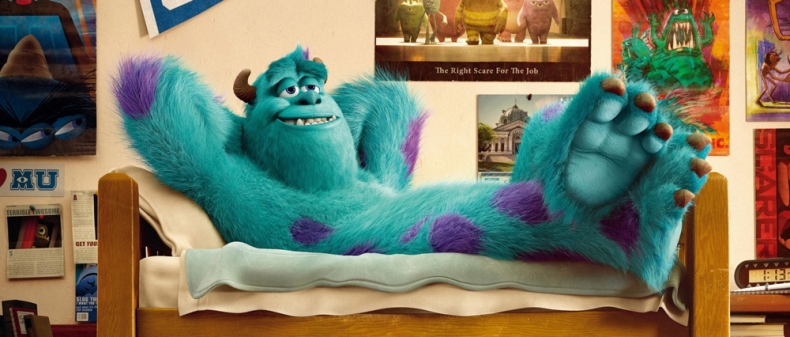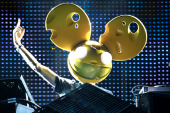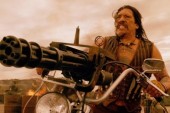
I watched Monsters University, the recently released prequel to Monsters, Inc., earlier this week, and every time I think about it I feel a little more disappointed. It’s not just that the film–a bland reimagining of Revenge of the Nerds with characters from Monsters, Inc. plugged in for the Tri-Lambs–is worse than your average animated comedy, though it is. It’s also the queazy uncomfortable feeling arising in my chest when my thoughts subsequently turn to 2008’s WALL-E, another Pixar Animation film released just five years ago that succeeded because of an enormous amount of creative inspiration. The first half of WALL-E features no dialogue. Pixar’s creative team took cues from silent cinema, classic animated films, and science fiction to create the story, and they brought in Roger Deakins, one of the best cinematographers in Hollywood, to help design the look of the film. Comparing WALL-E to the pedestrian, reference-heavy comedy of Monsters University is like watching your favourite musician collaborate with will.i.am on a remix album of old hits. In other words, Pixar sold out.
It might seem harsh or unnecessary to criticize an animation studio like this (like “You know who needs to be brought down a notch? Children, for putting up with this shit.”), but Pixar is responsible for creating some the best mainstream family films of a generation, so their descent into mediocrity is a fair target.
Audiences are lucky that the first feature-length computer-animated film happened to be Toy Story. Despite being the awkward stepchild of three corporations (Pixar started as a division of Lucasfilm, branched out with funding from Apple, and gained public awareness via a distribution arrangement with Disney), the studio had a serious attitude toward quality control. Toy Story isn’t just a circa-1995 visual wonder, it’s also a good movie. Most importantly it’s funny, but it’s also chock-full of creative setpieces, well-defined characters and an attitude towards generational change that’s mature for any movie, let alone a family comedy with strong merchandizing potential.
Toy Story set a template for Pixar films that would continue for the next decade, a combination of strong classical storytelling and visual wizardy, but Pixar’s early films also raised the bar for competitors. Both Dreamworks Animation and Fox’s Blue Sky Studios produced their best works (Antz, Shrek, Ice Age) in this early period of computer-generated animation, veritably spoiling the children of the late 90s and early 00s (or more likely, their parents). Yet Pixar still remained king of the animation world, knocking out the films like Finding Nemo and The Incredibles that would become the canon of this new genre. Notably, with Toy Story 2 being the only exception, Pixar avoided franchises for almost fifteen years, even as their competitors came out with four Shreks and Ice Ages apiece.
The guaranteed quality of Pixar films gave the studio the allure of an auteur. Even if it was a scary corporate filmmaking-by-committee auteur, it was still a good auteur, making films that ranged between good and great for over a decade. This status as an auteur explains the disappointment expressed by fans when Disney threatened to make a third Toy Story without Pixar. This threat occurred when friction between the two companies suggested the end of their hugely profitable relationship. But the Disney/Pixar split never happened. Instead, Disney purchased Pixar in 2006 and named John Lasseter, long-time chief at Pixar, to the role of chief creative for Disney Animation Studios. At the time, it seemed as though Disney wanted some of Pixar’s magic to rejuvenate its own lackluster in-house output, but seven years later, it’s apparent that Pixar, just like Marvel (and soon, Star Wars), became a cog in Disney’s franchise-creating, creativity-stifling, merchandizing machine.
If there was a point when Pixar’s notorious quality control got shafted in favour of a money-making venture, it was Cars 2, in which Pixar placed their reputation in the not-very-capable hands of Larry the Cable Guy, letting the Cable Guy-voiced Tow Mater be the lead of his own movie instead of a colourful supporting character. The first Cars was not the most successful Pixar film, but given that it was called Cars and it was about cars and it’s easy to sell toy cars to children, Disney’s merchandizing profits made up for the middling box office returns and a sequel was greenlit, marking the first time Pixar made an out-and-out bad film. In the last five years, Pixar has released five films. Two of them were sequels and one of them is Monsters University. In a couple years, we’re going to get Finding Dory, an unnecessary sequel to Finding Nemo. Pixar’s aversion to sequels is gone, and so, it seems, is their desire to tell worthwhile stories.
Ironically, what almost happened in 2004–Disney taking over Toy Story and making it without Pixar’s creative–foreshadowed what would happen nine years later. In August, Disney will release Planes, a spin-off set in Pixar’s Cars universe. But it will be produced without Pixar’s input and, as if to one-up Pixar’s poor taste in hiring Larry the Cable Guy, the protagonist of Planes will be voiced by Dane Cook. There’s no outrage over this because, unlike Toy Story, there’s no deep well of respect for the Cars franchise. They’re not films to get upset over, they’re films made to sell toys.
Last year, Pixar released Brave. It was the first Pixar film to feature a female protagonist, but it’s set in the type of revisionist folkloric world that has been visited a dozen times in various Shrek sequels, spin-offs and knock-offs. Even in original properties, Pixar has lost its knack for quality storytelling. In merging with Disney, Pixar has become a part of Disney. The films themselves are only a part of the equation as the bulk of profit is made from action figures. In the future, we may very well remember 2009’s Up! as the final true Pixar joint and, not coincidentally, Up! was the last Pixar film put into development before the studio was fully purchased by Disney. Pixar’s run from 1995 to 2009 was an improbable golden age in which, despite corporate pulling and tugging and a market that became ever more reliant on brand names and franchises, Pixar managed to create some of the best animated films ever made.
____
Alan Jones writes about film (and sometimes music) for Toronto Standard. You can follow him on Twitter at @alanjonesxxxv.
For more, follow us on Twitter @TorontoStandard and subscribe to our newsletter.














